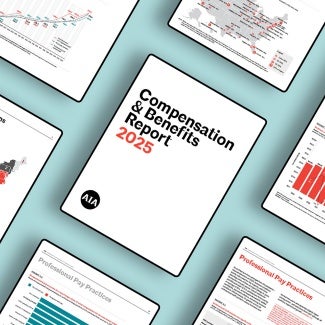The standard of care: How is it applied?
The function and application of the standard of care is a nuanced, complex, and multi-faceted issue that must be evaluated from different perspectives.

Standard of care liability
An architect’s failure to practice in accordance with the standard of care does not automatically result in liability. There are four elements that must be proven before liability and damages will be assessed on the basis of professional negligence.
Four elements of a professional negligence claim
First, there must be a duty owed by the architect to the party bringing a claim against the architect.
Second, there must be a breach of the duty owed. Meaning, there must be a failure on the part of the architect to act or perform its services within the applicable standard of care.
Third, there must be actual damages. These damages may be purely, economic, or they may involve personal injury or property damage. Without damages, even though there is a violation of the standard of care, there is no harm, no foul, and no liability.
Fourth, there must be a causal connection between the architect’s failure to perform in accordance with the standard of care and the actual damages incurred. The damage must be a direct and proximate result of the architect’s breach of the standard of care. If the damages did not occur as a result of the architect’s breach of the standard of care, there can be no liability.
Who determines if the four elements are proven?
In the dispute resolution process, there is a “trier of fact.” That trier of fact is the entity that hears the evidence and determines what the facts are. The trier of fact may be an arbitrator, a judge, or a jury. The trier of fact is charged with the obligation of evaluating the testimony of the fact witnesses, documentary evidence, and expert testimony; determining the facts; and rendering an award or judgment. It is this trier of fact that determines what happened, including whether the architect violated the standard of care.
Fact witnesses—those who participated in the matter and have actual knowledge of the relevant events—testify to their recollection of what transpired. Documents and evidence will be presented for review and consideration by the trier of fact. But how does this trier of fact determine what the standard of care is and whether the architect violated the standard of care?
Each party to the dispute resolution process retains expert witnesses to aid the trier of fact in its determination regarding the standard of care. The expert does not determine the ultimate issue of liability. Instead, the expert aids the trier of fact by providing the expert’s opinion. The expert must be able to testify that they have knowledge of the practices of the profession at the time of the relevant services, under the same or similar circumstances and in the same geographic area. The expert will be asked to ultimately opine as to whether or not the architect’s actions were consistent with the practices of the profession. The trier of fact will be asked to evaluate the testimony and opinion of the experts, in light of the facts of the case, and to ultimately rely on the credible expert testimony to determine whether or not the architect breached the standard of care. The trier of fact will also be asked to determine whether any such breach actually caused the damages alleged.
Unfortunately, when performing professional services, an architect is unable to look into a crystal ball and determine what a trier of fact will ultimately decide. Ultimately, the best way to avoid liability is to practice professionally and competently.
Subsequent articles in this series from AIA's Risk Management Program will further examine the standard of care and its application. Segments of this article will be reviewed in more detail, the standard of care’s application to risk prone areas of the architect’s practice will be analyzed, and actual lawsuits that interpret the standard of care will be reviewed.
AIA has provided this article for general informational purposes only. The information provided is not legal opinion or legal advice.



